"Tengo suficiente dinero para arreglármelas (para salir adelante). No tengo independencia económica sino que soy independientemente perezoso, supongo."
You can translate this blog using Google translator widget. And you can always comment in your language, of course!
Yellow texts are in English

montgomery clift
30.4.08
Monty's quote
"Tengo suficiente dinero para arreglármelas (para salir adelante). No tengo independencia económica sino que soy independientemente perezoso, supongo."
29.4.08
The Young Lions.- foto en color
27.4.08
19.4.08
Lonelyhearts.- Studio Time Job Order
 Esta hoja forma parte del plan de trabajo de la película Lonelyhearts (1958). Aunque no aparece el nombre de Montgomery Clift, es un interesante documento para ver los entresijos del rodaje.
Esta hoja forma parte del plan de trabajo de la película Lonelyhearts (1958). Aunque no aparece el nombre de Montgomery Clift, es un interesante documento para ver los entresijos del rodaje.Datos del documento:
(English text)
This is the copy of a Samuel Goldwyn Productions Studio Division Job Order that was created by the company as a duplicate the same time the original Job Order was written out in an Administrative Office of the Studio Division of this famous movie production company. A Job Order for production space at a studio is one of the first pieces of documentation generated in the production of a movie or television show. The original copy would be given to the company or person actually producing the show, while this copy would be retained by Samuel Goldwyn Productions for reference purposes.After several years these copies were disposed of by the company. A Job Order is a printed receipt for a reservation for Movie or Television production studio lot space at the Studio Division of Samuel Goldwyn Productions to shoot scenes or to lease production space for a given theatrical or television production. After the script has been written, the acquisition of production space at a studio is one of the first things that would be done in the producing of a movie or television show. Depending on the movie or TV show, a Job Order to reserve production and/or shooting space is a significant and rare piece of movie or television memorabilia.
18.4.08
Retrato (4)
 A Clift Drawing by a young Murph
A Clift Drawing by a young Murph
17.4.08
From here to eternity.- secuencias
15.4.08
John May en su blog The Generalist traza este esbozo del actor:
This is an article I wrote that was published in Issue 9 of The Face magazine [ January 1981]. More on this important magazine to come.
THE RIGHT PROFILE
Montgomery Clift
(Oct 17, 1920- July 23, 1966)
‘That’s….Montgomery Clift, Honey!’
– The Clash
He was the first. A bisexual intense, isolated loner. The first of a completely new breed of film actors to seem obsessed. He was disturbing, a chameleon of the emotions. An overnight sensation, he became the most powerful actor in Hollywood yet remained a total enigma.
If he had died young he would have been a huge cult figure; instead he became, in the words of one observer, "the slowest suicide in show business."
He influenced Brando and Dean, de Niro, Pacino and a hundred other young bucks yet he has since been erased from the public memory. Now The Clash sing about him and two major movies are planned on his life. So who was Montgomery Clift?
Edward Montgomery and Roberta Clift were twins, born to Bill, a Southern gentleman and born salesman and Ethel, an unstable woman who was to dominate Monty's w hole existence. A deeply sensitive child, he spent his early life travelling from one exotic location to another as a result of his parents' disintegrating marriage but was always surrounded by high culture and the things that money can buy.

Clift became fascinated with this idea and long preparation, the accumulation of subtle details, was to characterise every part he played.
Offstage his life was an emotional minefield. His mother was smothering him and, when he did make the break from her, it was only to take up with two mother substitutes: Mira Rostova, who became his acting coach, and Libby Holman, a rich society queen with two dead husbands behind her. But by the time he was 19 Monty had realised he was primarily gay —a career killer at that time—and the fact that he was forced to lie and compromise his own sexuality set up dark internal tensions.
He began pulling an increasing number of "pranks", such as hanging by his fingertips from a window ledge 13 stories up and he developed a growing fascination with drugs. Longtime friend Kevin McCarthy, later to star in the original Invasion Of The Bodysnatchers, tells how he used to accompany Clift to Powders, a big drug store on Madison Avenue, where Monty would engage in serious analytical discussions with the pharmacist on the merits of downers.
The first of many serious illnesses - crippling dysentry contracted on a Mexican holiday - prevented him seeing active service and he spent the war playing soldiers on Broadway. In 1945 he got his first starring role as a fighter discharged from an Army hospital for mental cases in Foxes and he became a matinee idol.
Soon the Hollywood offers began rolling in. Monty flew to California but told the moguls straight that his artistic conscience would not allow him to sign away control of his career. There was a part of him that simply didn't care and this gave him negotiating power.
His Broadway acting got more daring, more innovative and the film offers got better. Finally, in the summer of 1946, he accepted Howard Hawks' deal to play opposite John Wayne in a tough western, Red River, shot on location in Rain Valley, Arizona.
Hawks, who discovered and made Lauren Bacall and Carole Lombard, admired Clift but couldn't shape him. Wayne thought Clift an "'arrogant little bastard". Yet all agreed his performance was powerful and Clift knew the implications. He later said: "I watched myself in Red River and I knew I was going to be famous, so I decided I would get drunk anonymously one last time."
In fact. Red River was delayed in release for one and a half years as Howard Hughes sued, claiming Hawks had stolen the climactic scene from his infamous picture The Outlaw. 
In the meantime Clift had made The Search for Fred Zinnemann, a post-holocaust refugee drama in which he came across as a hero with a conscience, vulnerable, realistic, disillusioned.
When this powerful image hit the screens, Clift became a star. Bobby soxers - that first postwar manifestation of teen fervour - worshipped him for his aura of sexless romance. With that single film, he suddenly had more power in Hollywood than even Clark Gable and the moguls needed him badly.
It was the time of the Actor's Studio, the Method, of strange new masculine images and Monty went partway in search of this new macho, discarding his breeding, good manners, cultured airs and straight suits in favour of being beat. He lived in a shabby hotel, was awkward and Bohemian, wore t-shirts and blue jeans and walked with a sexual swagger.
He met Brando around this time. Like Clift, Brando was born in Omaha but there the resemblance ended. Four years his junior, Brando was a muscular hothead who played bongos, rode bikes, kept a racoon in his apartment and was defiantly AC-DC. Brando may have accused Clift of having "a Mixmaster up his ass" but, to their mutual embarassment, they were both heavily influenced by each other.
Elizabeth Taylor was another seminal figure in Monty's life. At the age of 17, she played a wealthy society girl for whom Clift killed his pregnant girlfriend (Shelley Winters) in A Place In The Sun, which was to transform him from a teenage idol to the biggest young film star bar none. Their love scenes, shot in intimate close-up with a six-inch lens, were startling at the time and captured their deep feeling for each other, which extended off-screen. When Taylor discovered Monty was gay their romance ended but they remained friends for life.
An amazing picture of Clift shot by Stanley Kubrick. This and several other pics here from the brilliant site If Charlie Parker Was a Gunslinger, There'd Be a Whole Lot of Dead Copycats
Supremely successful, Clift was emotionally screwed. He began seeing a psychiatrist and had a legendary 14 foot long medicine cabinet installed in his home, which he stocked with pills of all colours of the rainbow. For some two years he turned down every film offer and spent his time between nights of high society living with the likes of Garbo, Chaplin and Aldous Huxley, and nights of slobbish dementia with rough trade picked up off the Hollywood streets. For the record, Clift had a tiny penis, which led Kenneth Anger to nickname him "Princess Tiny Meat" in the unexpurgated version of his book Hollywood Babylon.
He began work again with Hitchcock, in the summer of 1952, playing a priest in I Confess and then followed this with the peak film of his career. From Here To Eternity, based on the powerful novel by James Jones. He played Prewitt, a boxer and bugler, so Clift threw himself into mammoth preparations, working out with pros in the gym and taking bugle lessons to get mouth and throat movements right. Later Deborah Kerr recalled this detailed obsessiveness: "He spent two days figuring out how to say "Who's that?'"
Frank Sinatra played Maggio in the film and Monty worshipped him. They would go off with James Jones and drink like there was no tomorrow. The press agent on the film recalls: "They were a motley trio. Jones looked like a nightclub bouncer with his thick neck and broken face. And there's this edgy cocky little wop Sinatra always spoiling for a fight, and then Monty who managed to radiate class and high standards even when pissing in the gutter."
Clift's intensity affected everyone on the set, stimulating them to raise their standards, and it soon became clear that the film would be a big smash. Yet the nightly binges began affecting Clift and, for the first time, alcohol began to interfere with his work. Filming over, the friendship with Sinatra was not to survive. One night Monty came on sexually with a guy at a party in Bel Air and Sinatra had his bodyguards throw him out on the street and he never spoke to him again.
Eternity established that Clift was in a league of his own but he retreated from his fame into aberrant behaviour. He became prone to a mental state termed "hebephrenic schizophrenia", a reversion to the childhood state, characterised by crawling around on all fours and eating food with his hands. During this period he turned down 163 movie offers including On The Waterfront, East Of Eden and Cat On A Hot Tin Roof, which established Paul Newman, who was described as the new Clift.
James Dean was one of many young actors w ho idolised Clift. He obtained his unlisted phone number and would call him up just hear the sound of his voice. For his part Monty thought Dean was weird but when he heard of his car smash it shook him. He later said: "Dean's death had a profound effect on me. The instant I heard about it I vomited, I don't know why." This was an eerie statement as events turned out.

Then, midway through the production on May 12, Clift was at one of Taylor's dinner parties in a house on top of one of those winding Los Angeles canyons. On the way home he missed a bend and crumpled his car like an accordion around a telegraph pole. When he was finally cleared from the wreckage his body was found to be virtually unharmed but his face was a disaster area. His head was swollen as wide as his shoulders, he had severe concussion, his jaw was broken in four places, his nose in two, his cheekbones were cracked and his front teeth were missing.
After hospitalisation the doctors wired his jaws together and he somehow finished the film. He took amphetamines, downers, alcohol, anything to dull the pain. He sweated so much with the effort that he had to change his shirt eight times a day. When the movie came out a ghoulish public flocked to see if they could notice which bits were shot before and after the accident. Astonishingly Clift finished the whole film before he would dare look in a mirror. He believed his career as an actor was over.
Despite the fact that the left side of his face was now paralysed he managed to keep working. The following year he played opposite Brando in The Young Lions, portraying a character named Noah which he based on a picture of Kafka taken the year of his death.
During shooting Brando lived on a diet of amphetamines and seconal while Clift was never seen without his hip flask containing a lethal mixture of bourbon, crushed Demerol and fruit juice. Brando tried to get him to enlist with Alcoholics Anonymous. He told him: "In a way I hate you. I always hated you because I want to be better than you, but you're better than me - you're my touchstone, my challenge, and I want you and me to go on challenging each other . . . and I thought you would until you started this foolishness."
Clift did not or would not respond. In his private life he became a "superchild", constantly causing scenes and in constant need of attention. In restaurants he would throw food around and was fond of greeting waiters by saying "Hello, fuckface". Guests at his apartment like Arthur Miller, Norman Mailer and Truman Capote stood it all with sadness.
When Marilyn Monroe met him she found a kindred spirit. They starred together, along with Clark Gable, in The Misfits in 1960. By this time Monroe was so addicted to pills she could hardly function but she could still say of Clift: "He's the only person I know who's in worse shape than I am".

During filming Monty was hit accidentally in the eyes and developed cataracts as a result. In constant pain, suffering from deep fatigue and disturbing depressions, he finally-finished the film only to find himself embroiled in a lawsuit with Universal, who blamed him for the picture being over-budget.
After this shattering experience no work was offered to him for four years. He was uninsurable, sick and desperate. One show business writer who met him wrote: "I saw him in 1964; his face had been altered by the terrible car crash he endured in 1956, his once lithe body was rigid, his movements constricted. And the face was a mask; the eyes were dull. He could hardly walk. A friend led him by the elbow. His hand trembled. He stumbled slightly as he moved along. He seemed as if he were in a trance, as if he were no longer with us, as if his overwhelming personal isolation was irremediable. And I remember thinking: he's a dead man."
By the end of his life Clift, one of the great screen actors of all time, was being wheeled out as a curiosity at Andy Warhol parties. He was eating nothing but raw meat and canned baby food. After enduring enormous pain for ten years, he finally died of a heart attack on July 22, 1966.
Hedda Hopper, the powerful Hollywood columnist, once asked him: "In one sentence, what is the story of your life."
Clift replied: "I've been knifed."
Ficha de cacitel
14.4.08
From here to eternity.- secuencias (1)
12.4.08
11.4.08
Recuento de encuestas
* Your favourite film. Vote!: 21 votos.
A PLACE IN THE SUN (9 votos, 42%)
FROM HERE TO ETERNITY (mi prefe) / THE MISFITS (4 votos, 19%)
RED RIVER / THE HEIRESS (2 votos, 9%)
* ¿Qué película debería haber protagonizado Montgomery Clift de las que no hizo?: 2 votos.
SUNSET BOULEVARD
* ¿Qué persona le hizo más daño a Monty?: 7 votos.
Sencillamente... él mismo, es lo que cree la mayoría (y yo) con 6 votos.
Sunny, su madre (1 voto)
muchas gracias a todos los que han votado. a partir de ahora se vuelven a abrir. me hace mucha ilusión que voten y sabed vuestras opiniones.
10.4.08
Felicia Sorel
Le excitaba el sonido del piano utilizado en los ensayos mientras captaba las imágenes de las bailarinas en la barra o moviéndose por el encerado, ensayando pasos o movimientos.
- Hay una calidad onírica en la danza -decía-, pero al mismo tiempo subyace una intensa calidad emocional.
Poco después empezaron los ensayos del musical Everywhere I Roam y Monty siguió fotografiando a las baiarinas mientras trabajaban. Felicia Sorel, casada con Gluck Sander, era la coreógrafa. Mujer imperativa y fumadora empedernida, produjo una gran impresión en Monty. Después e los ensayos, él y la Sorel sostenían largas conversaciones sobre la fantasía y la magia inherente al buen teatro y cómo la danza podía elevar la fantasía y remontarla
- Monty medio se enamoró de Felicia -recuerda Morgn James-. Ella poseía una remota cualidad, como Brenda Frazier; era misteriosa, independiente, inalcanzable: Monty la adoraba.
En las siguientes imágenes hay recortes de un espectáculo de Sander-Sorel. Y una curiosidad es que tuvieron como alumno a Jerome Robbins. En este artículo, aunque la biografía de Patricia Bosworh no dice nada al respecto, lo situan como amante suyo.

.jpg)
(A vintage flyer announcing the Third Dance Recital of the Season by Felicia Sorel and M. Senia Gluck at the Martin Beck Theatre (now the Al Hirschfeld Theatre) on March 31st, 1929. From my research it appears that Sorel & Gluck, who was born Samuel Gluck and over the years was known as E. Senia Gluck, Sam Gluck, Senia Gluckoff and Gluck-Sander, have not always received the credit they deserved for their influence on modern dance. As an example of their influence, the choreographer, Jerome Robbins, credited Gluck with facilitating his entry into the dance world.)
Una tarde de enero de 1939, Felicia Sorel presentó Monty a A. Lehman Engel, el director.
9.4.08
Clippings (recortes y collages) (1)






8.4.08
Éxito de Monty en Dame Nature
[una anécdota que he recogido: Leland Hayward, empresario de la pieza musical South Pacific, y otros éxitos de taquilla de Broadway, actuó también como agente para personas como Judy Garland, Katharine Hepburn y Ernest Hemingway. Negociante sagaz, siempre tratando por teléfono, manejaba tantos clientes que a muchos de ellos no los llegó a conocer personalmente. Una vez la actriz Ginger Rogers rechazó un papel que le ofrecían y Hayward, en funciones de agente suyo, irrumpió en el despacho del productor para protestar:-¡Cómo es posible que insulten a Ginger con esta basura, esta porquería, esta inmundicia...!-¡Hayward! –rugió el productor-¡Lárgate de aquí antes que te haga echar a patadas! ¡Ese guión nos lo vendiste tú mismo!]
Mientras se sucedían las representaciones de Dame Nature corrió la voz por todo Broadway de que la interpretación de Montgomery Clift era algo especial, no ortodoxo y que tenía que ser vista.
Y aunque la obra sólo tuvo 84 representaciones, todo el mundillo teatral fue a verla y se presentó entre bastidores. Todos querían ver y conocer a Montgomery Clift.
Así lo recuerda el actor James Morgan, quien hacía el papel de Batton:
- Me gustaría haber hecho una lista de los visitantes que accedieron a su camerino. Orson Welles, Ruth Gordon, Katherine Cornell, Guthrie McClintic, George Abbott, Elia Kazan...
Como se indica en la biografía de Patricia Bosworth, también entraron allí innumerables muchachas. Chicas solitarias atraídas por su belleza y talento, mujeres maduras que querían acostarse con él, agentes de bolsa de Wall Street, pianistas e incluso viajantes de fuera de la ciudad. Todos aparecían entre bastidores con el pretexto de felicitar a Monty por su actuación. Y algunos le invitaban a cenar o a una copa.
Monty encantaba a todos con su penetrante mirada.
La actriz Pat Collinge recuerda como seducía a la gente. En este post he recopilado sus recuerdos de entonces.
críticas a Dame Nature
"La idea de un joven padre que trata de conseguir un descuento del diez por ciento en un coche de niño utilizando sutarjeta de boy -scout me incita a correr hacia la salida más próxima."
Y George Jean Natham que le gustó la obra en Westport, en Broadway la calificó de
"sentimentaloide".
Pero hubo críticos que admiraron la actución de Monty. Brooks Atkinson la alificó de
"bellamente modulada y original".
y Richard Watts, en el Tribune dijo:
"el joven Clift tiene un papel en extremo difícil y, en conjunto, lo desempeña excelentemente, aunque en ocasiones resulta un padre demasiado neurótico."
5.4.08
Sesión de fotos (5): comentarios

 Éstas dos instantáneas son muy parecidas entre sí y siempre me ha llamado la atención, cómo se ve la piel de la cara de Monty. Aparecen manchitas, puntitos, principio de acné y granitos. No sé, siempre me lo ha parecido así.
Éstas dos instantáneas son muy parecidas entre sí y siempre me ha llamado la atención, cómo se ve la piel de la cara de Monty. Aparecen manchitas, puntitos, principio de acné y granitos. No sé, siempre me lo ha parecido así.Para ver las fotos en tamaño extra grande ver post.
Sesión de fotos (5)
4.4.08
recuerdos de Pat Collinge
estos son sus recuerdos en los ensayos donde parecía
"encantador y terriblemente deseoso de agradar y en extremo creativo".
- Inventaba fragmentos de detalles de asuntos o de los personajes que, a veces, resultaban excéntricos o raros. Todavía recuerdo la frase de Camus "crear peligrosamente" cuando recuerdo a Monty actuando, porque ya entonces empezaba a elegir interpretaciones poco ortodoxas.
Hay una larga parrafada en la obra cuando Monty en el papel de André trata de explicar a su padre que su soledad y su infelicidad le han obligado a buscar el afecto de una muchacha igualmente solitaria.
La interpretación de Monty fue desgarradora. Se mostró tan sincero y natural que parecía casi auténtico excepto que, bajo su controlado tono de voz, latía una absoluta y apremiante sensación atormentada.
Monty interpretaba con encantada sorpresa y cierto terror la escena en que André, el muchacho de quince años, descubre que va a ser padre. Era una maravillosa actuación.
Mediadas las representaciones de Dame Nature, Sunny fue a Westport para ver la obra. Se instaló en la habitación de Monty para pasar el fin de semana y James Morgan se marchó.
Dice Pat Collinge al respecto:
- Todos en el Guild opinaron que era muy raro que un muchacho de dieciocho años [¿los había cumplido ya?] compartiera la habitación con su madre. Desde luego nadie dio nada, pero se mostraron sorprendidos.
Cenaron juntas y éste es el retrato que nos ofrece de ella:
"La encontré encantadora, adorable, pero también asesina. Sofocaba y reprimía a Monty sin permitirle dar libre curso a su entusiasmo ni a sus más profundas necesidades. Era chocante que los personajes de Dame Nature reflejaran las características de Monty y Sunny. En la obra, la madre es socialmente ambiciosa y dominante e incluso cuando su hijo va a ser padre trara de hacerle llevar pantalones cortos y jugar de modo infantil.
También captó la fuerza de Sunny.
- Si le prohibía algo, Monty la obedecía.
Esta anécdota ilustra tal comentario:
Aquel fin de semana Pat ofreció algunos dulces de chocolate en la merienda que Monty rechazó cortesmente. Después se enteró de que nunca había probado bombones porque Sunny le había comentado que eran dañinos para la salud.
También recuerda lo atractivo que ya era:
- Durante las representaciobnes se convirtió en un flirteador terrible. Firmaba autógrafos y entablaba breves conversaciones. Tenía un modo especial de mirar con aquellos ojos maravillosos que producían desmayos.
3.4.08
The young lion.- critica
The Young Lions (1958)
Irwin Shaw's 'Young Lions'; War Story Is Offered at the Paramount Brando, Martin and Clift Are Starred
A FRESHLY refurbished Paramount Theatre was reopened for business last night with a benefit premiere performance of the film made from Irwin Shaw's "The Young Lions." In harmony with the occasion, Mr. Shaw's story has been refurbished, too.
Most noticeable of its changes is in the character of the young Nazi who, along with two American soldiers, is central in Mr. Shaw's novel of World War II. In that large and sweeping saga, this young warrior is introduced as a fairly decent ski instructor who, under the hammering of nazism and war, is molded into a monster, fired with militaristic madness and blood lust.
But in this prettier film version, which is two hours and forty-seven minutes long, this significantly unregenerate Nazi is changed into a very nice young man who never embraces nazism with any apparent zeal. Indeed, he regards the whole business of war with sadness and disgust that become increasingly depressing as time and disasters pile up. Finally, he is thoroughly disillusioned and sick to death with it all, when a bullet, fired by one of the American heroes, brings his sad life to an end.
As played by Marion Brando, with his hair dyed a shiny corn-silk blond and his voice affecting a German accent reminiscent of Weber and Fields, this fellow is sensitive and attractive. He evokes complete sympathy. He has the gentleness of one of those nice young Germans in the memorable "All Quiet on the Western Front." Indeed, there is much about "The Young Lions" that is mindful of that film. It is not so much anti-Nazi as it is vaguely and loosely anti-war.
And this cues the second notation of what has been done with Mr. Shaw's story in this film, which was produced by the late Al Lichtman for Twentieth Century-Fox. It has been chopped by scriptwriter Edward Anhalt into a sort of formless mosaic episodes that fall together int a sort of formless mosaic of the emotional upsets and physical hardships of three soldiers caught up in war. There is really no noticeable moral difference between the one German and the two Americans.
Some of the episodes are quite affecting, such as the one in which the American, who is a Jew, puts up a long, courageous battle against a group of G.I. bigots, abetted by his captain, in training camp. This is matched by the episode in which the German is distastefully compelled to take part in the slaughter of British soldiers caught in a desert surprise attack. In each instance, the individual hero is brutalized by his own countrymen. The only villains are the singular brutes on both sides who make life in the armies miserable.
As it happens, Mr. Brando makes the German much more vital and interesting than Montgomery Clift and Dean Martin make the Americans. Mr. Clift is strangely hollow and lackluster as the sensitive Jew. He acts throughout the picture as if he were in a glassy-eyed daze. And Mr. Martin plays a Broadway showman pulled into the army against his will as if he was lonesome for Jerry Lewis and didn't know exactly what to do.
Unfortunately, neither the script nor the direction of Edward Dmytryk gives him much help. Mr. Martin has by far the least expressive of the three main roles in the film. Even his girl, played by Barbara Rush, gets shanghaied somewhere along about the end of the second hour and is seen no more. There are several loose threads that Mr. Anhalt and Mr. Dmytryk have failed to tie.
As for the women in the picture—Hope Lange, May Britt and Miss Rush—they are competent and attractive in conventional war-picture roles. A shrill, vicious Nazi captain is played that way by Maximilian Schell.
There are plenty of hard, familiar incidents in this black-and-white CinemaScope film, but they are old stuff in the making of war movies and they don't add up to a clear theme. "The Young Lions" is strangely impositive about totalitarian aggression and all-out war.
2.4.08
Revista japonesa (2).- abril 1958
 Revista japonesa "Eiga No Tomo" de abril de 1958 con Jennifer Jones en la portada y el siguiente contenido:
Revista japonesa "Eiga No Tomo" de abril de 1958 con Jennifer Jones en la portada y el siguiente contenido:Geoffrey Horne, Jean Seberg, Anthony Perkins, Deborah Kerr.
Audrey Hepburn~ The Nun's Story Pics Album
Yul Brynner, Burt lancaster.
Elizabeth Taylor and Montgomery Clift Pics Album filled with great photos.
Ingrid Bergman, William Holden, Curd Jurgens, Rock Hudson, Marlene Dietrich, Sophia Loren, Hope Lange, Lana Turner, Barry Coe, Greta Garbo, Alec Guinness, Grace Kelly, Maria Schell, Cary Grant, Greer Garson, Ann Blyth, Paul Newman and more.
The young lions.- Premiere

Actor Montgomery Clift and Hope Lange. (Photo by NY Daily News Archive, 3 abril 1958)
El 2 de abril de 1958, tal día como hoy hace justo 50 años, se estrenaba The Young Lions. El estreno tuvo lugar en el teatro Paramount de Broadway. Montgomery Clift, con un arrugado esmoquin, asistió a la premiere acompañado de Libby Holman. Estaba nervioso, anhelante por la acogida que tuviera su retrato de Noah tras el esferzo sobrehumano de interpretarlo. Según dijo a algunos amigos, esperaba una gran acogida:
Ya tengo escrito mi discurso de aceptación del Oscar -confió vivamente al agente de prensa John Springer.
Sin embargo le atenazabn los peores augurios. Creía que el futuro de su carrera dependía de si su retrato de Noah era aceptado crítica y comercialmente: sería la prueba para saber si iba a convertirse en un actor importantísimo u olvidado, malográndose su esfuerzo. Sabía que no era el mismo que había sorprendido a los espectadores con su talento y belleza interpretando el papel de vaquero en Red River. El accidente había alterado y ensombrecido su sensibilidad. Lo que había intentado hacer en The youn lions era arriesgado:
50º Aniversario del Estreno de The young lions (2 abril 1958)
 Es la 10ª película de Montgomery Clift (la primera tras su accidente) y destaca porque actúa junto a Marlon Brando. Será la primera y única ocasión en que actúen juntos. Podían haberlo hecho en Al este del edén cuando estaban en pleno apogeo de sus carreras.
Es la 10ª película de Montgomery Clift (la primera tras su accidente) y destaca porque actúa junto a Marlon Brando. Será la primera y única ocasión en que actúen juntos. Podían haberlo hecho en Al este del edén cuando estaban en pleno apogeo de sus carreras.Se trata de una película nuevamente ambientada en la II Guerra Mundial, con la particularidad de que Monty interpreta a un judío y Brando a un nazi. El proyecto sin embargo quedó bastante deslucido por la mala adaptación de la novela de Irving Shaw y el propio Monty se lamentaba de ello.
Al estreno asistió con Libby Holman. Ver post.
Tenía 37 años y medio.
1.4.08
Foto del mes (6)


Su carrera comprende 17 títulos entre 1948 y 1966. Trabajó con los grandes directores (Hawks, Hitchcock, Stevens, Zinnemann, Kazan, Huston, Wyler) y las grandes estrellas (Lancaster, Marilyn Monroe, Katherine Hepburn, Brando, Wayne, Elizabeth Taylor especialmente) de entonces.
Su carrera comprende 17 títulos entre 1948 y 1966. Trabajó con los grandes directores (Hawks, Hitchcock, Stevens, Zinnemann, Kazan, Huston, Wyler) y las grandes estrellas (Lancaster, Marilyn Monroe, Katherine Hepburn, Brando, Wayne, Elizabeth Taylor especialmente) de entonces.
Say, where did I see this guy?
In red river?
Or a place in the sun?
Maybe the misfits?
Or from here to eternity?
Everybody say, is he all right?
And everybody say, whats he like?
Everybody say, he sure looks funny.
Thats...Montgomery Clift, honey!
New York, New York, New York, 42nd street
Hustlers rustle and pimps pimp the beat
Monty Clift is recognized at dawn
He aint got no shoes and his clothes are torn
I see a car smashed at night
Cut the applause and dim the light
Monty's face is broken on a wheel
Is he alive? can he still feel?
Everybody say, is he all right?
And everybody say, whats he like?
Everybody say, he sure looks funny.
Thats...Montgomery Clift, honey!
Nembutol numbs it all
But I prefer alcohol
He said go out and get me my old movie stills
Go out and get me another roll of pills
There I go again shaking, but I aint got the chills
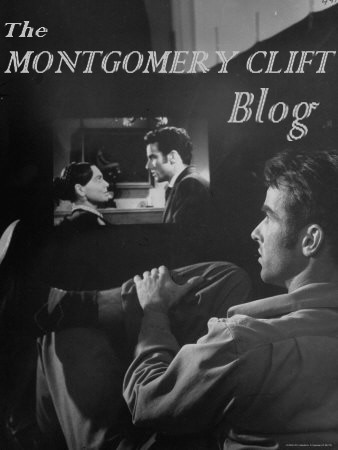




























.-+albornoz+(4)+BLOG.jpg)
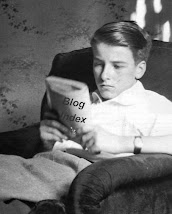
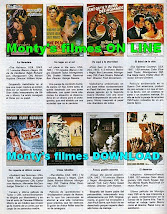


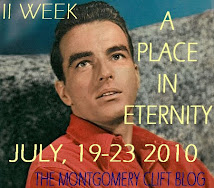
















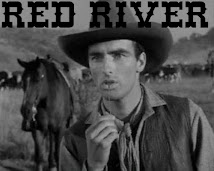


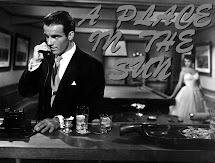2.jpg)
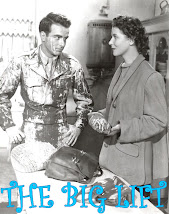.jpg)


.jpg)

